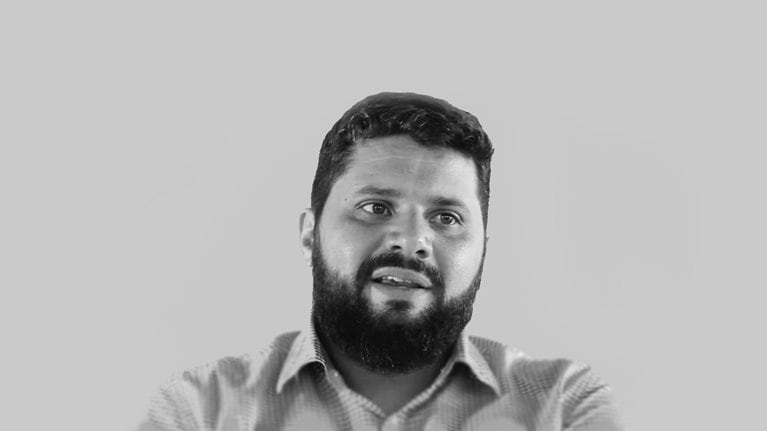Founded in 2012 as a corporate car booking service, Careem quickly grew to become an on-demand transportation company operating in 100 cities across the Middle East, Africa, and South Asia. In March 2019, Uber announced a deal to pay $3.1 billion for Careem, which would become a wholly-owned subsidiary of Uber but operate independently under the Careem brand. In an interview that took place before the acquisition was announced, Careem co-founder and CEO Mudassir Sheikha explained what the company had to do to adapt the go-fast culture of a start-up as it expanded rapidly.
An ever-expanding vision
Our vision has grown every year. In the first year, we wanted to be the biggest dispatcher of taxis in the GCC (Gulf Cooperation Council). Then we targeted the broader Middle East. As we expanded into Egypt, we asked ourselves why we should stop at taxis and limousines, so we then wanted to be the leader in moving people. The next frontier for us was to expand beyond people and set our vision for being the regional leader in moving people and things. Today we’ve raised our ambitions further and want to be the internet platform of the region.
Our execution has followed the same iterative nature, starting with a minimum viable product for one big customer (a service that was not at all what Careem looks like now) and continuously increasing and expanding to match our vision.
Customer centricity as the engine of change
We quickly realized that we’d have to compete with global tech giants—Uber today, Amazon tomorrow—who had deeper pockets and a deeper talent pool. But we knew we could beat them by being local, acting faster, and staying closer to the customer. I want to stay close to markets and customers. I answered tickets myself at first, and still spend an hour every week calling customers who aren’t using us anymore to ask why. Many of these conversations help us understand our true strengths so we can double down on them. Customers give us ideas, and we have the benefit of having two sets of customers—captains (drivers) and passengers/businesses.
Maturing priorities
We used to believe that growth was the ultimate proof of success. If we were growing, we knew we were doing things right. That was true for the first two to three years when we had little money and growth was driven by the quality of our offering. But as we grew, we realized we were increasingly spending money on growth rather than investing in building long-term capabilities. It was almost like a drug. We were offering free rides, for example, to expand our customer base when launching in new cities. But we quickly recognized it was the customer experience that drove our growth, and we started shifting investment accordingly.
Experience-driven growth takes more time, particularly in a region where there’s no shortage of capital. It’s hard when a competitor cuts prices by 60 percent. But we believe in building the experience and are committed to it, so we can weather those challenges.

Fast Times: How digital winners set direction, learn, and adapt
Front line leads the charge
We don’t have a headquarters, we have a basecamp, because we’re supporting the countries or markets that are summiting the peaks. The markets take the lead so we can move fast.
Over time, the basecamp has evolved to take on more and more of an advisory and service-provider role. On product development, basecamp allocates resources based on major strategic thrusts (for example, the number of engineers needed to revamp the payment experience), and then the teams decide what to produce and how to prioritize. The basecamp develops deep content expertise to help the markets. However, we put the onus on the basecamp to convince the markets of their own expertise.
We also believe strongly in transparency on the front line. Our “pulse of Careem” is an almost real-time internal performance dashboard to which everyone has access. This was a conscious choice despite several security concerns and other incidents along the way. We believe that the benefit of hyper-transparency is well worth the costs.
Getting initiatives off the ground and shutting them down when it’s time
We empowered the front line to develop growth initiatives. This allowed us to move faster and to attract talent. Funding for ideas is straightforward: someone comes up with an idea, we discuss it over a call and agree on the business case, then it moves forward. At first we were not as deliberate about shutting things down, however. So we focused more on agreeing to KPIs and timelines up front, which then made it easier to shut down projects that didn’t perform as expected.
We find ourselves increasingly focusing on long-term experience KPIs rather than short-term growth ones. For example, on the driver side, we’re tracking how effective our platform is at ensuring drivers are earning as much as they can for every hour worked. When it comes to customers, we of course prioritize customer satisfaction score as a longer-term metric, and are starting to think beyond that too.
Tech first and tech everywhere
At the beginning of 2018 we started hearing that we were slowing the markets down. This was mostly due to our finance and technology requirements, which were becoming complex and limiting. This led us to readdress our core values and recommit to them. We launched the “Careem operating system” which goes beyond our values to include the way we work—launching quickly and iterating, working in autonomous teams, and so on.
A core principle of our new Careem OS is that tech has to be everywhere in the company. For us to scale, we can’t just have tech that delivers products or delivers marketing campaigns. It needs to be in call centers, service centers, in every city, and with every employee to enable customized experiences. Tech had been a centralized capability, and that made it a challenge to support our local markets. We’re now moving to distributed tech capabilities without compromising on our tech architecture principles. At the same time, we’ve developed common systems, tools, and methodologies, etc. so that people can more easily use the tech wherever they are.


